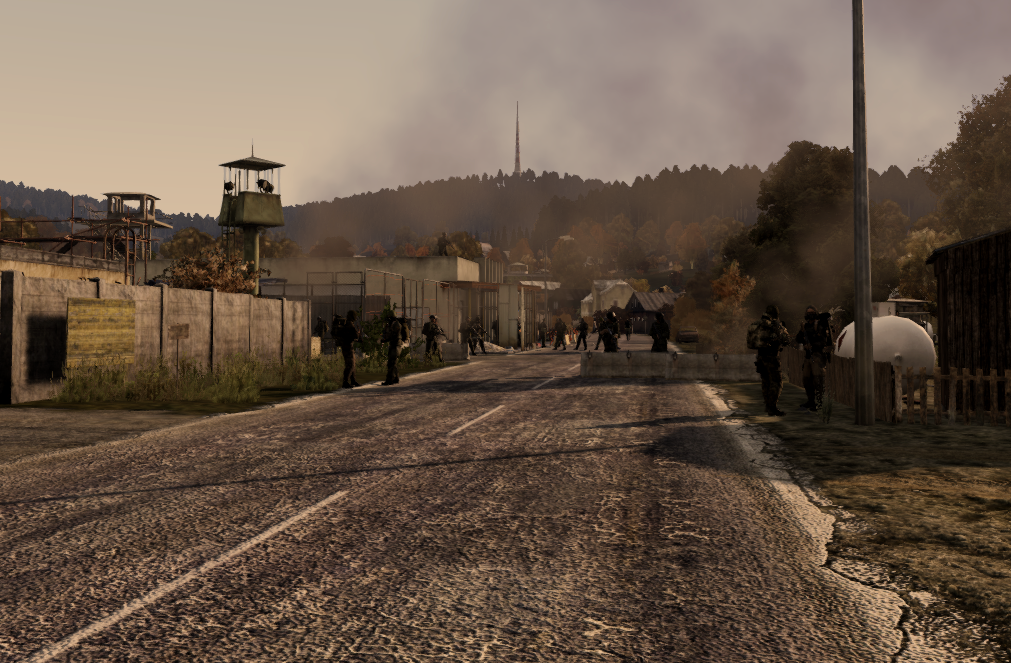Chernarus
Chernarus is a post-apocalyptic region that was once a thriving country located in Eastern Europe. Following the devastating extraterrestrial attack in 2037-2038, the area fell into chaos and was later incorporated into the Canton Strategic Protocol Alliance Treaty (CSAT) as part of its Eastern Division. The region is now a heavily infested zone, abandoned by global powers in a bid to contain the spread of the Kry-Zok infestation. Chernarus is characterized by its harsh environment, complex political landscape, and the presence of numerous factions vying for control and survival.
Historical Context
Prior to the infestation, Chernarus was known for its strategic location and developed infrastructure. The invasion of the Kry-Zok led to widespread devastation and an ongoing struggle to reclaim and secure the territory. In the wake of the attack, the Chernorussian government was overthrown, and the region fell under the control of various local factions and warlords. The global powers, including CSAT, abandoned Chernarus to create a buffer zone, concentrating their efforts on defending other parts of the world from the infestation.
Economic and Social Conditions
Chernarus' economy is primarily driven by scavenging, trading, and mercenary work. The harsh conditions and infested environment have led to a high level of resource scarcity and social fragmentation. Various factions vie for control of key resources and territory, leading to frequent conflicts and shifting alliances.
Current Challenges
- Infestation: The Kry-Zok infestation remains a significant threat, with ongoing efforts to contain and combat its spread.
- Faction Rivalries: Internal factional conflicts continue to shape the political landscape, making stability and reconstruction difficult.
- External Pressures: The global powers' focus on defense and containment of the infestation has led to minimal external support for Chernarus, leaving it to its own devices.
Regions and Features
Northern Chernarus
- Mountainous Terrain: The northern part of Chernarus is dominated by a range of rugged mountains, including the prominent Kamenka Range. These highlands offer strategic vantage points and have become critical for defensive operations against the Kry-Zok infestation.
- Forests and Woodlands: Extensive forests, such as the Kabanino Forest, cover much of this region, providing both cover and resources for survivors. The dense vegetation also hides remnants of pre-war infrastructure.
Central Chernarus
- Rolling Hills and Farmland: Central Chernarus features rolling hills and formerly fertile farmlands that have been largely abandoned due to the infestation. Areas like Gorka and Novy Sobor were once known for agriculture and small villages but are now heavily affected by the aftermath of the invasion.
- Chernarus River: The central region is bisected by the Chernarus River, a major waterway that has seen varying degrees of contamination. The river remains an essential resource for survivors and a focal point for many conflicts.
Southern Chernarus
- Lakes and Marshlands: Southern Chernarus is characterized by several large lakes, including Lakes Tisy and Lakes Chernogorsk, and marshlands. These bodies of water are crucial for local ecosystems but have become breeding grounds for various forms of infestation.
- Urban Ruins: The major city of Chernogorsk is located in this region, now largely in ruins. The city’s infrastructure was heavily damaged during the invasion, leaving behind a stark reminder of pre-war urban life.
Western Chernarus
- Dense Forests and Hilly Terrain: Western Chernarus is covered with dense forests and hilly terrain, including areas like Western Chernarus Woods. The forests provide shelter and resources but are also heavily infested and dangerous.
- Military Fortifications: This region is home to several old military fortifications and outposts, now abandoned or repurposed by various factions for defensive and strategic purposes.
Eastern Chernarus
- Coastal Areas: The eastern part of Chernarus features a rugged coastline with several small ports and fishing villages that have been heavily impacted by the infestation. The coastlines are characterized by steep cliffs and rocky shores.
- Industrial Zones: The industrial areas, including Balota and Zelenogorsk, are now largely desolate. These zones were once hubs of production and commerce but have since fallen into decay and are now considered high-risk areas.
Post-Apocalyptic Changes
- Infestation Zones: The Kry-Zok infestation has altered the geography significantly, with previously stable areas now overrun by hazardous biomes and mutated flora and fauna. Certain regions have become nearly uninhabitable due to the spread of infestation.
- Abandoned Infrastructure: Many roads, bridges, and buildings are in disrepair or have been overtaken by the infestation, making navigation and travel perilous.
- Environmental Hazards: The landscape now includes various environmental hazards such as toxic zones, contaminated water sources, and unstable terrain due to the extraterrestrial attack.



Comments